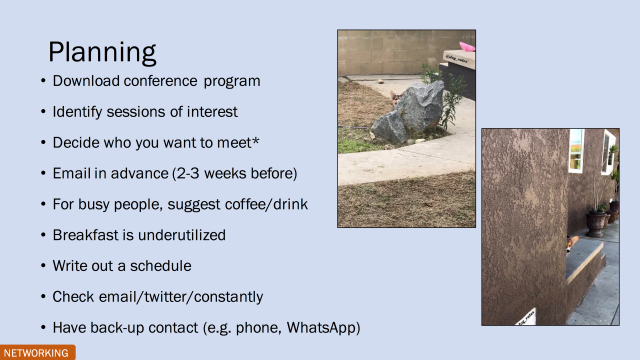 To the surprise of absolutely no one, I’ve just returned to Cambridge from a recent bout of travel, this time to Washington DC for the Society for American Archaeology meetings.
To the surprise of absolutely no one, I’ve just returned to Cambridge from a recent bout of travel, this time to Washington DC for the Society for American Archaeology meetings.
This was an unusual conference for me. I’m slowly transitioning from working in one region (Iberia) into conducting research in a new area (Romania). As a result, all of the background material that I rely on having previously prepared to slot into presentations had to be crafted from scratch. Constructing this new backdrop was a useful process, in that it made me delve more deeply into the regional literature, but also meant that putting together my presentations took longer than I am used to. My talk covered our initial research strategy in Transylvania, describing how we’re weaving together evidence from unstudied human skeletal remains in museum collections and new excavations of Early Bronze Age cemeteries in order to better understand how Late Prehistoric communities were organized.
This was also the first conference during which I co-authored a poster with a former student. Emilie Cobb, currently director of the Rankin Museum of American Heritage, spent three weeks in Romania with the MARBAL project last summer, helping to conduct a bioarchaeological analysis of human skeletal remains housed at the National Museum of the Union in Alba Iulia.
Our poster covered initial bioarchaeological analyses of Minimum Number of Individuals (MNI), age, sex, mortuary treatment, and frequencies of skeletal and dental pathologies
In DC, I also finally threw in the towel and gave in to embracing networking. Over the past few years, I’ve noticed a marked shift in my conference experience. Rather than trying to catch as many sessions as possible, as I did when I first started attending the SAAs in 2013, I’ve been spending far more time catching up with old friends and networking. Especially since I now live in the UK, I’m very deliberate about planning coffees, drinks, or meals with scholars I want to talk to. I outlined these strategies recently in a talk I gave as part of the Biological Anthropology Professionalization Series at Cambridge, which I plan to recap on the blog in the next few weeks.
This time around I had at least fifteen meetings or events planned over a three-day period, so I often found myself hurtling around the conference center like a pinball. However, I did make sure that I attended several talks given by close friends, starting with MARBAL co-director Colin Quinn‘s presentation on his work with Alice Wright mapping socio-economic networks in Woodland North Carolina titled “Confronting Myths of Isolation in Pre-Columbian Appalachia.”
After power-walking for a mile and half on Saturday morning, I arrived at Anna Antoniou‘s talk drenched in perspiration and sat beaming proudly in the back, ignoring the skeptical looks of fellow audience members who were no doubt wondering who had let this sweaty apparition into the conference center. She gave a phenomenal presentation (co-authored with her collaborator Earl Davis), titled”Collaborative Archaeology in Willapa Bay, Washington: Supporting Communities through Scientific Research”. Her talk detailed strategies for building relationships with local native communities and incorporating their interests and concerns into research design.

Finally, I swung by the National Geographic sponsored session “The Human Journey: Understanding Human Migration in the Past to Address Challenges for the Future,” specifically to hear a talk given by the youngest presenter, Bree Doering. As a motorcycle-riding, caribou-hunting, and salmon-fishing Alaskan, Bree is one of the most unrepentantly badass field archaeologists I know, and it was wonderful to see her channel her considerable energy into a talk on “Exploring the Cause of the Athabaskan Migration through Isotopic and Geospatial Evidence”.

With that, I’m done with conferences until I head to the European Association of Archaeologists meetings in Barcelona in September.
In the meantime, if you’d like to read our poster, it’s linked here on Academia.edu, while the abstract of our presentation can be found here.
For now, I’ll leave off with this memory of drinking afternoon beers on the lawn with some of my close friends – hopefully it’s enough to get me through this unrelenting spate of spring rains in Cambridge!









Pingback: Bone Broke Year in Review 2018 | Bone Broke
So about that presentation to the Bio Anth Professionalization Series talk…did you ever get around to posting about that?! I would love to read about your thoughts on the topic of networking at conferences since I’m so bad at all as a graduate student. Also, I noticed other presentations you’ve given for professionalization aren’t posted. It’d be awesome to have discussions on professionalization in the field as well. Things about the job market, interviewing, networking, blogging, etc.
LikeLike
Hi Mark! I never got around to posting it, but am happy to put it up in the next few days, though I doubt you’re as bad at networking as you think. If you’re on twitter, I encourage you to check out the number of early career researchers who are taking the Clance Impostor Test and tagging #ImpostorSyndrome…
I’m not really comfortable posting about the tenure track job market or interviewing because i do not currently have a tenure track job, so it’s unclear how successful my strategies really are. I’d be happy to post about blogging, but you’d have to let me know what you wanted to know about it.
LikeLike